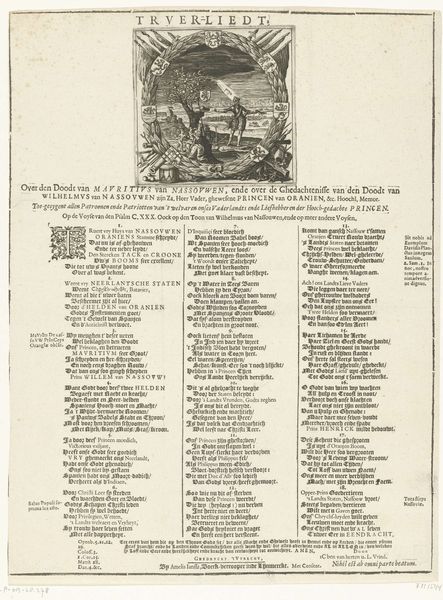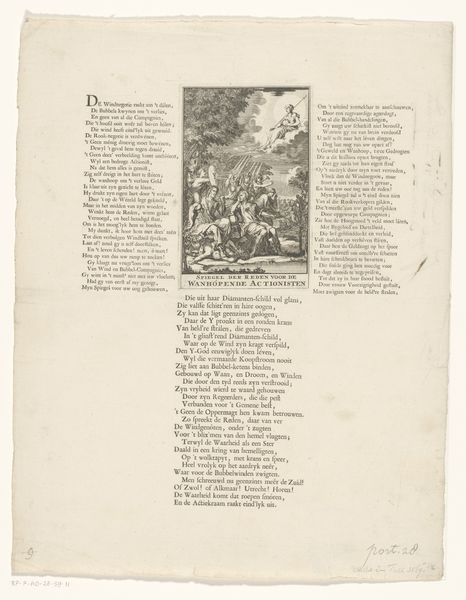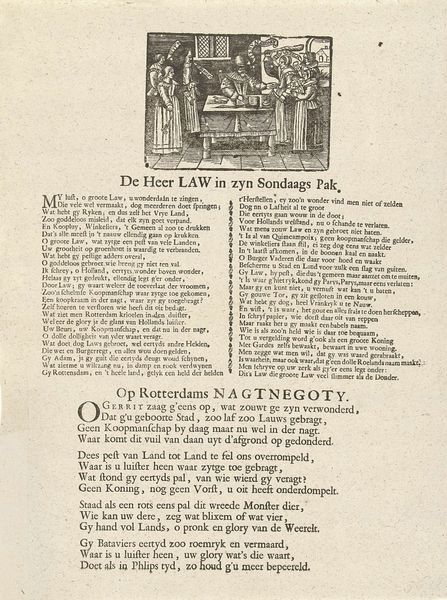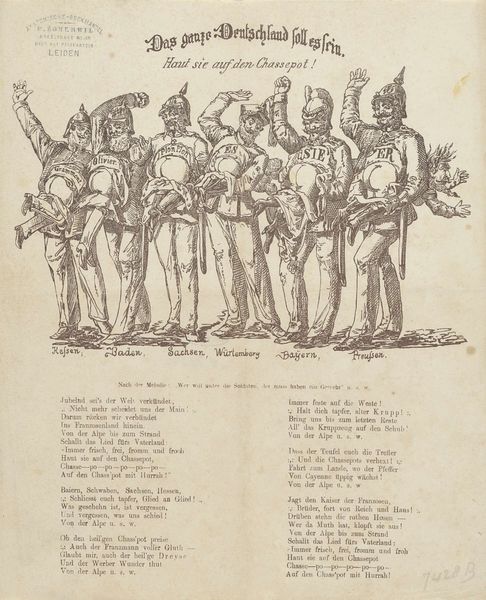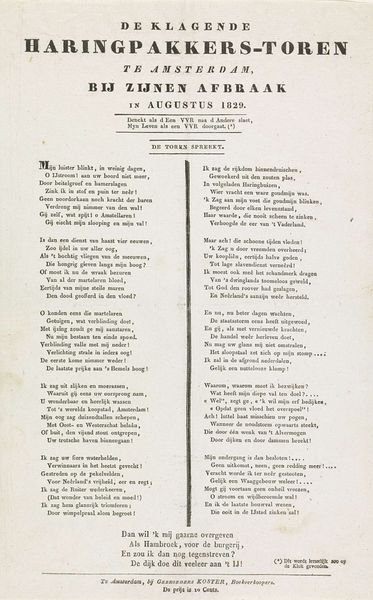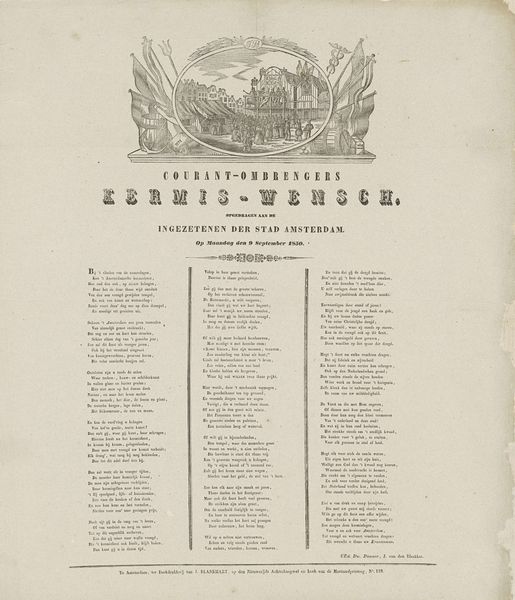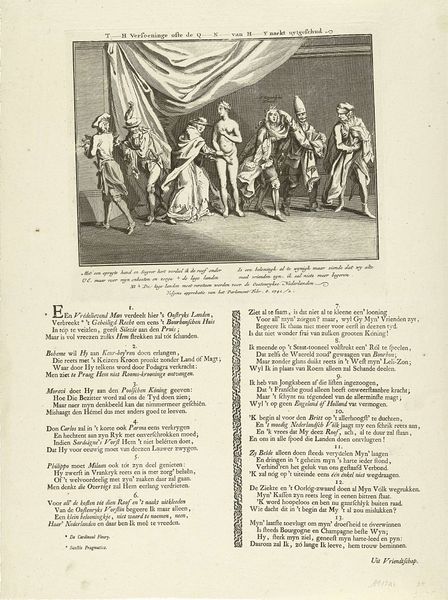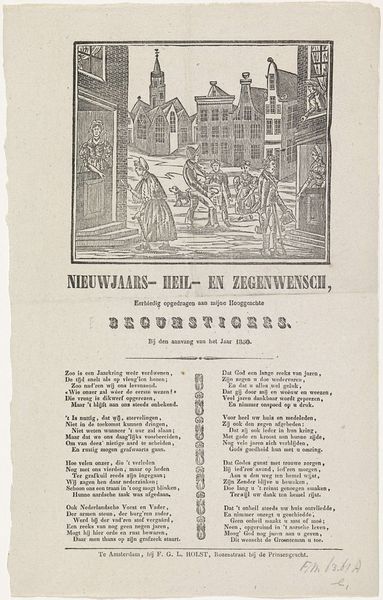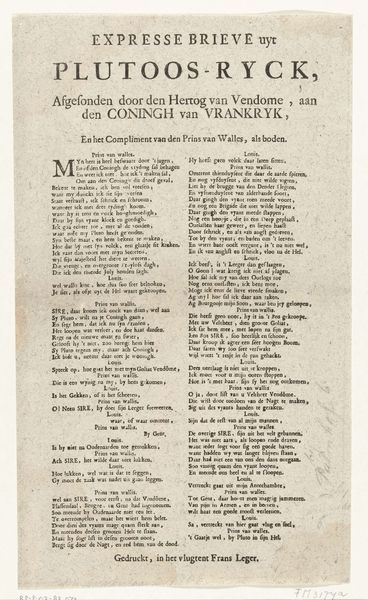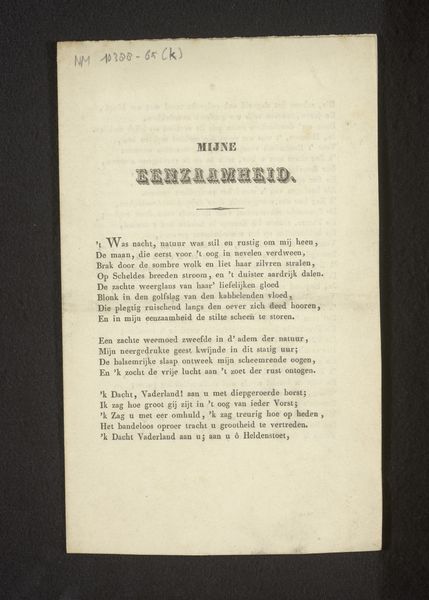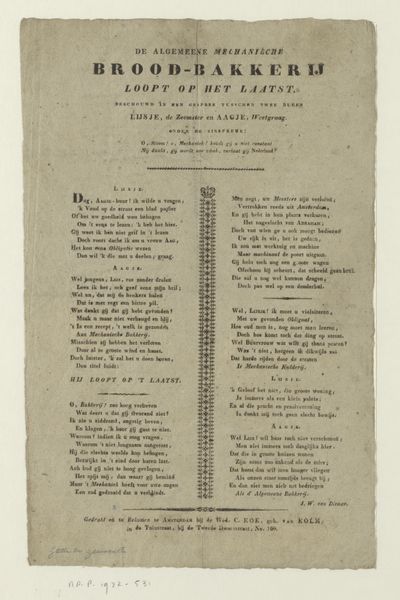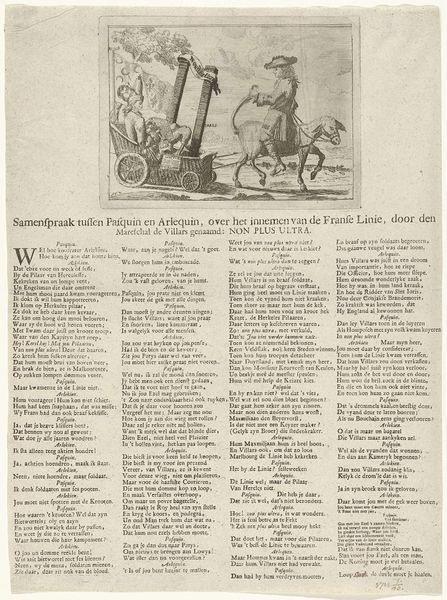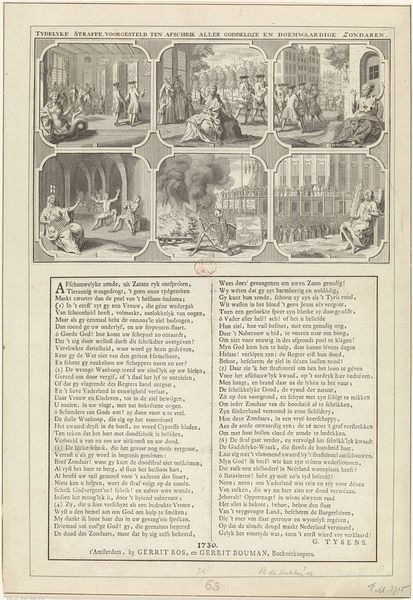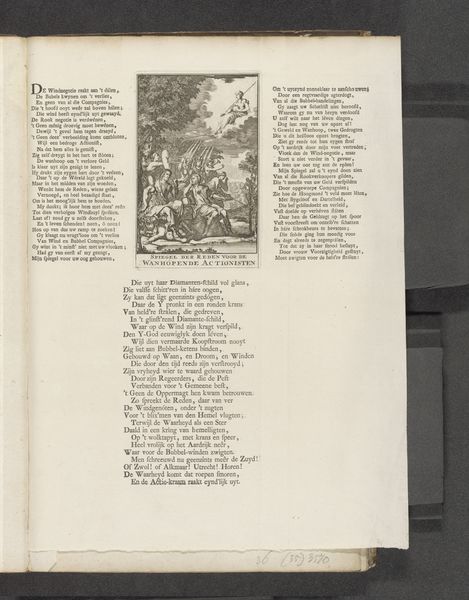
lithograph, print
#
narrative-art
#
dutch-golden-age
#
lithograph
# print
#
figuration
#
genre-painting
Dimensions: height 337 mm, width 216 mm
Copyright: Rijks Museum: Open Domain
Editor: This is a lithograph print called "Man veilt afspraakjes voor tijdens de kermis," which roughly translates to "Man auctions dates during the fair." It's anonymous and dates to between 1864 and 1875. There's almost a frantic energy in the image, created by the man at the center of the crowd yelling out to them from atop a small box, with all these frenzied faces pointed in his direction! How do you interpret this work? Curator: This print offers a rich case study in formal analysis. Notice first the stark contrast created by the medium, where the artist masterfully plays with light and shadow to focus our attention on the central figure. Editor: That makes sense, but what about the textual element? Is there anything to analyze, there? Curator: Absolutely. The text operates as a visual element. The arrangement and typography creates its own texture on the page, doesn't it? The bold typeface of "KERMIS-AARDIGHEID" contrasts the smaller script underneath, creating a hierarchy of information and guiding the viewer’s eye. It frames the visual. Editor: I see what you mean! Almost like an early form of advertising design. So it is not important that I can't understand a thing? Curator: Quite so! Understanding Dutch isn't essential to appreciating its compositional function here. Consider, too, the subtle framing effect of the blue stamp in the top corner... do you notice how its circular form echoes the rounded shapes of the figures below? This cohesiveness shows masterful use of form and balance, irrespective of content. Editor: That's fascinating; I had only considered the representational aspects before. Now I recognize the importance of purely visual and compositional choices in creating meaning. Curator: Precisely! By looking beyond the immediate subject and analyzing the formal structure, we can uncover layers of artistic intent, regardless of the cultural context.
Comments
No comments
Be the first to comment and join the conversation on the ultimate creative platform.
